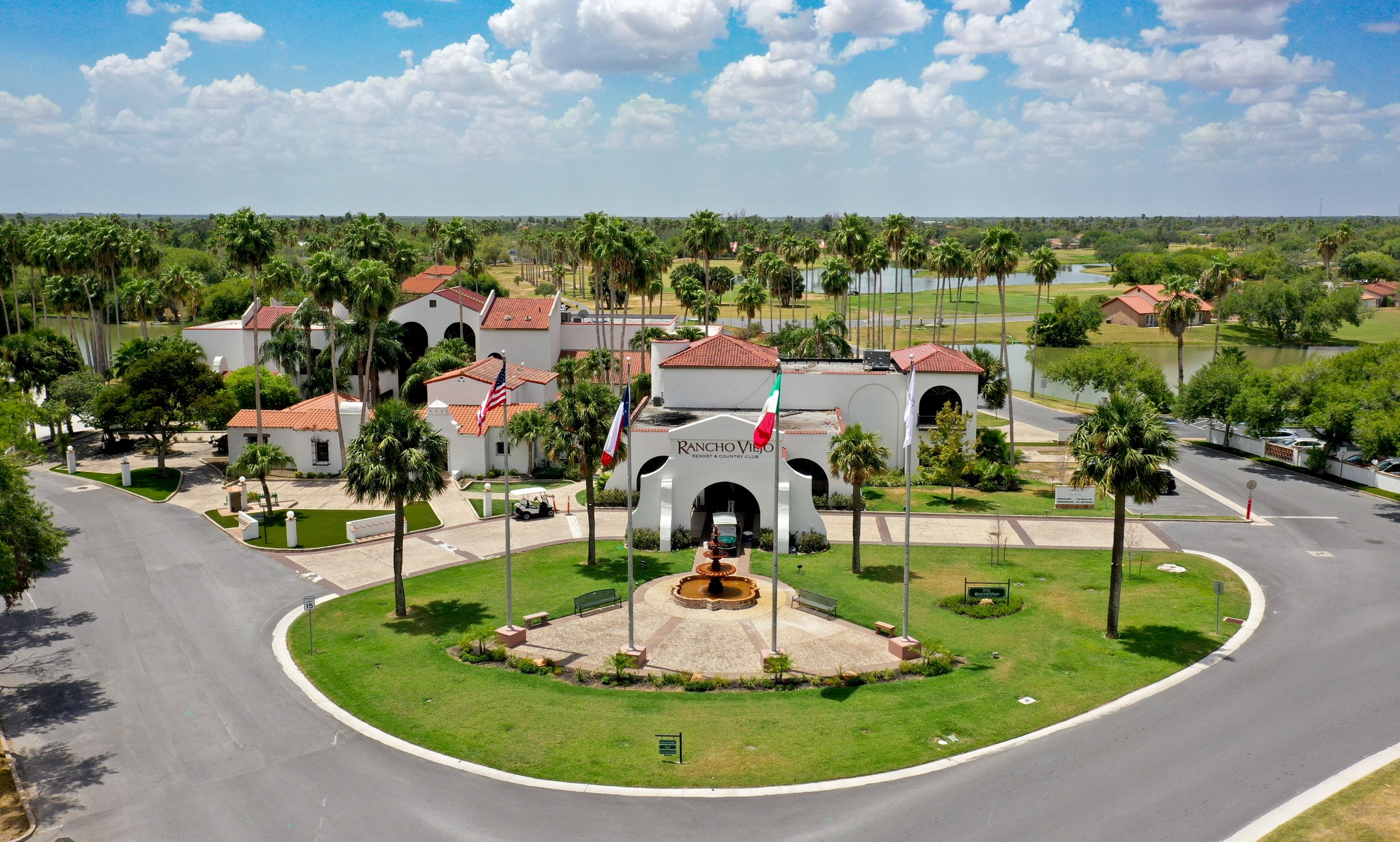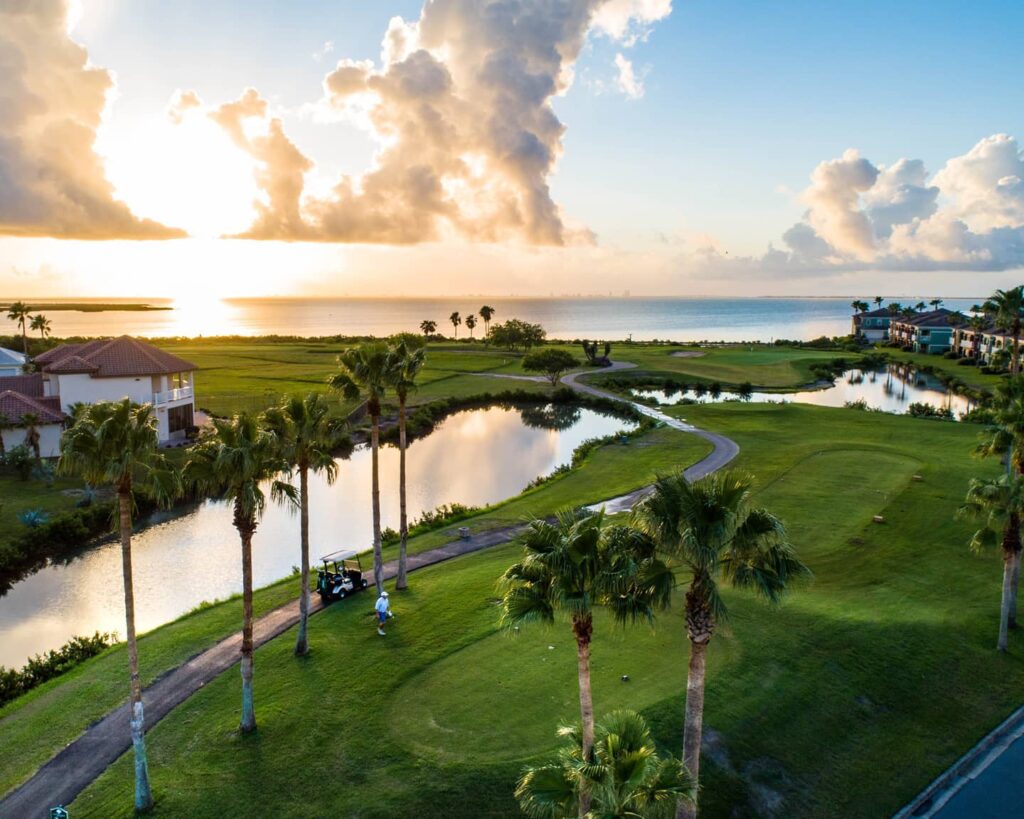
Rancho Viejo Resort and Country Club
There is a change in attitude as you go further south in latitude on your way toward the Rio Grande Valley of Texas. Here, even as the region continues to grow in population and as a center for commerce and link to Mexico, time seems to pass a little slower.
This is a place where life is good and the living is fun and more laidback.
A recent National Golf Foundation poll found that the Rio Grande Valley has more playable days of golf per year (less than 25 days lost) than anywhere in the United States, making it the place to point my truck when the weather turned frigid farther to the north.
The Valley is a winter tourist destination for residents from the Midwest and Canada (called “Winter Texans” or “Snowbirds”), as well as Mexican nationals and thousands of college students who visit South Padre Island throughout March and April for Spring Break activities.
It’s also the only region in the United States where birders can observe certain varieties of tropical birds more typical of Mexico and straddles the path taken by the migratory Monarch butterfly as it transits to and from the Mexican state of Michoacan.
The area is highlighted by two great courses – South Padre Island Golf Club in Laguna Vista and the El Diablo course at Rancho Viejo Resort & Country Club in suburban Brownsville. These facilities would be worth the trip any day, but even more so when the sun is warm and bright.
South Padre Island Golf Club can be a test
Constant wind makes the venerable South Padre Island Golf Club a test of patience and great golf. Longtime PGA Tour professional Dave Stockton once said, “When the ducks are walking, you know it is too windy to be playing golf.” And while we never would walk off the golf course because of the wind, the South Texas coast is a place where folks don’t even bother to comment unless it tops the 40-mile per hour mark.
South Padre Island Golf Club’s designers Stephen Caplinger and Chris Cole considered the fact that there would normally be at least a 20-mph wind when they fashioned the track. It’s the southernmost course in Texas and set across Laguna Madre (the area’s intercoastal waterway) from its island namesake.
Opened in 1987 as the centerpiece of a gleaming residential community developed by Landmark Land (the folks behind the likes of PGA West, Kiawah Island and Oak Tree) South Padre Island Golf Club plays to a par of 72 and at 6,931 yards from the tips.
The club has hosted the Texas Senior Open and the South Texas PGA Southern Championship and must be taken seriously, especially when its hardest holes – the 415-yard par-4 eighth, the 409-yard par-4 11th and (perhaps surprisingly) the 133-yard par-3 12th – are played into a stout wind.
For most of the year, the shorter holes play into the wind and its longer offerings are aided by a breeze, which allows golfers to hit the ball farther but also affects ball spin on approaches. The design is highlighted by wide fairways bordered by native yucca, mesquite and cactus, and shots that fail to find the fairway will bury in waste areas and deep rough.
The course’s signature hole is the risk-reward, 334-yard, par-4 fifth. With the left-to-right breeze, golfers might be able to reach the green off the tee and can bite off as much as you choose. Beware of a shot that moves too far right and into the beachfront that skirts the hole from tee to putting surface.
The 455-yard ninth is the longest par-4 at South Padre Island Golf Club and finishes at a putting surface guarded at the rear by a deep bunker to catch shots that are overcooked. The aforementioned 12th is one of the best holes on the course, with a green surrounded by wetlands. Miss it and you’re likely staring at bogey or worse; even reaching the massive putting surface in regulation does not guarantee par.
The 410-yard par-4 18th is a great closer, with water and sand down the entire right side and a downhill slope toward the water at the end of the landing area.
The challenges at South Padre Island GC are varied and diverse. The holes go one direction, then turn for a while, then head off in another direction. Besides wind, players will also find water on half the offerings and wetlands and high-grass areas to make things even more interesting.
Around every bend and on virtually every hole visitors will find reasons that the golf course is one of the finest in the Rio Grande Valley. Enveloped by nature and buffeted by the wind, this venue is truly an oasis.

South Padre Island Golf Club
Rancho Viejo is like a dream
Opened for play in 1971, Rancho Viejo Resort and Country Club was the only real option for championship golf in this neck of the woods for almost four decades. Over the years, the facility has hosted the PGA Tour Qualifying School (Curtis Strange, Craig Stadler and Peter Jacobsen earned their cards here) as well as celebrities and golfers looking to escape winter’s chill.
Designed by Dennis Arp, El Diablo has been updated several times through the years, including the installation of TifDwarf greens that are probably the best part of the course’s experience. El Diablo is a par-70, with the routing punctuated by eight water hazards.
The morning we played at Rancho Viejo, the fog was thick and conditions were wet, making El Diablo seem like it was suspended in a dream state of muted colors and sounds surrounded by faded ranch-style homes and ancient trees. Once the fog burned off for our afternoon round, the stark reality came to bear of a tough layout amid tight confines.
At 6,847 yards and relatively flat, El Diablo might not seem like much of a challenge by looking at the scorecard. But the course’s name aptly fits here, thanks to the combination of stout par 4s (three weigh in at more than 440 yards, including the 440-yard second hole and the 452-yard eighth), lengthy par 3s (three at more than 201 yards, highlighted by the 218-yard 16th which is played entirely over water and into the wind), and a pair of tight but reachable par-5s.
El Diablo is more protected than many golf courses in the area because of its inland location along but the wind is still a constant consideration. Add water, fairways lined by homes and out-of-bounds looming on every other corner, and you might be tempted to leave your driver in the bag as often as not.
The closing holes on each side are the highlights at El Diablo. Both are great two-shotters. The ninth is a 403-yard dogleg-left with a lake down the left side of the fairway and tall palm trees lining the lake. Hit your drive far enough to make sure you take the palms out of play and give yourself a good look at the green, which is surrounded on three sides by sand.
On the 423-yard 18th keep your drive left to avoid the lake down the right. Be wary of the tall trees that line both sides of the fairway at the prime landing area and take one more club to carry the bunkers that front the putting surface.
El Diablo was formerly the site of the Historic Brownsville Open on the Duramed Futures Tour (now the Epson Tour). The course is a good test of accuracy and putting prowess and belongs on the short list of must-play courses in the Valley.
Rancho Viejo is a relaxed, golf-oriented community and resort that is high on quality and low on pretense. Ever-present is the influence of Spanish and Mexican heritage. You see it in the red tile roofs, fountains and tropical gardens that grace the public areas.
The property features a pair of excellent dining facilities and a conference center with plenty of meeting and party rooms, and its award-winning landscaped swimming pool with its very large waterfall will remind some of the South Seas.
On-site accommodations are in two- and three-bedroom villas located along the golf course or the Resaca del Rancho Viejo. All villas are furnished in regional décor and handicrafts and have attractive views. Rancho Viejo is located just 30 minutes from the beaches of South Padre Island and 20 minutes from shopping in Mexico.
Other options in the Rio Grande Valley
- Los Lagos Golf Club, Edinburg: Eleven acres of lakes highlight this Robert von Hagge design that leans more towards a links-style layout.
- Tierra Santa Golf Club, Weslaco: Designed by Jeffrey Brauer with input from PGA Tour pro Steve Elkington, this challenging course plays through 14 lakes, with length, sand bunkers and wind constants throughout. Most holes end at extremely large, fast putting surfaces that are of championship quality.
- Champion Lakes Golf Course, McAllen: This Charles Howard-designed track has surprising movement and roll in an area not known for much elevation change. It’s generous, and fairways are lined by rough and mounds that at places create a links- style atmosphere but at others offer a more parkland design.

